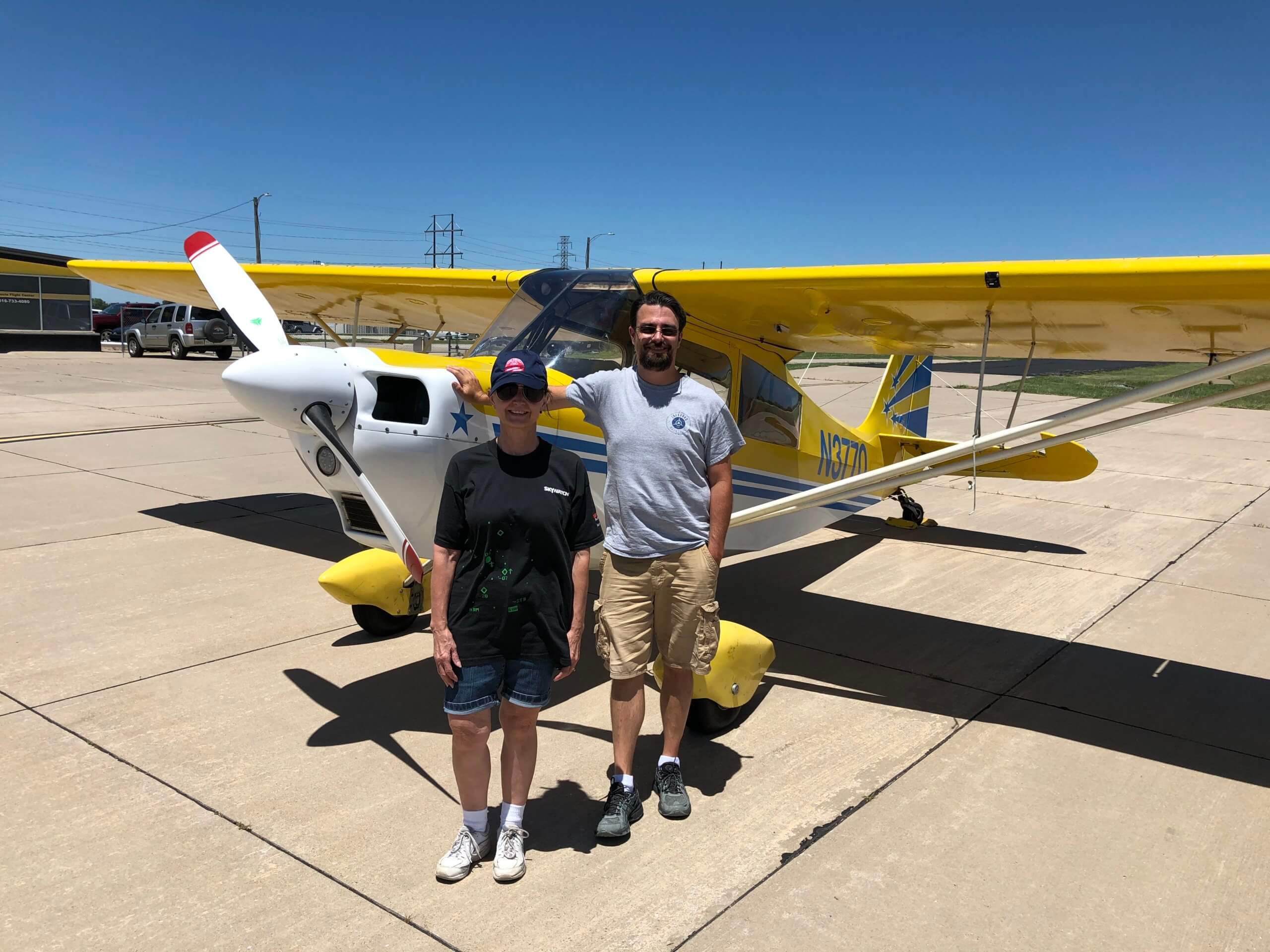In the Fall of 2019, I applied for and was awarded a scholarship from Women In Aviation (WAI), for training toward getting a tail wheel endorsement. But why bother?
I earned my private pilot certificate, single engine land (SEL), in 1992 in a Cessna 152, a tricycle gear aircraft. Over the next few years, I flew, as a student, many different SEL and even a few multi-engine aircraft , but never acquired any other pilot ratings.
I was content to fly the 1961 Forney Aircoupe, one of two aircraft I inherited from my father. It has all I want, a simple, reasonably inexpensive way to depart the bounds of earth from time to time. I even take a cross country trip on occasion.
However, the other inherited plane is an Experimental Aircraft Association (EAA) Biplane. It was in “kit” form. In other words, in component and parts Daddy began building from blueprints in the late 60s. It has been in storage for, well, a long time, and frankly was not sure what I would do with it.
But a couple of years ago, my local EAA took the biplane on as a chapter project. So, if I am going to fly the biplane when it is completed, I have to learn to fly a stick and rudder, tail wheel aircraft!
The Comparison – Aircoupe vs. EAA Biplane
As I said, I have been quite content to fly my little red coupe. It is just my size, docile, and ever so cute. I know her inside and out. We have been through a lot together. However, The Aircoupe and Biplane have only this in common: they are both single engine aircraft with no flaps.
 The Aircoupe:
The Aircoupe:
- Two Seats side by side
- Tricycle gear
- 90 Horsepower Continental Engine
- Closed Flight Deck
- Low wing 35 foot span
- Metal covered
- no P Factor
- Dual yokes for Control
- Rudder pedals that are nice to have
The Biplane:

- Single Seat
- Conventional (Tail wheel)
- Minimum 110 Horsepower
- Open Cock pit
- Upper and Lower Wing 20 Foot span
- Fabric covered
- Stick and Rudder controls
- Rudder control essential from start up to shut down
- Normal P factor
- It can be aerobatic.
In other words, these two aircraft are on opposite ends of the SEL spectrum.
Other Reasons To Bother
In July, I received my tail wheel endorsement. My primary motive is obvious, I want to fly the biplane! In the process, though, I expanded my piloting skills by:
- learning transition techniques from one aircraft to another
- flying a 160 horsepower aerobatic Belanca Decathlon
- improving my rudder precision
- acquiring good stick and rudder techniques
- reworking rather entrenched muscle memory
- gaining self-confidence overcoming intimidation in the process
Stepping outside one’s comfort zone in any endeavor feel risky because it is! Tangible or intangible, fear lurks and seeks to keep us at bay. But once motivated, and you step out, there are always extra benefits “to bother”.
What will you “bother” to do this week? Make a plan to do one thing outside you comfort zone and share it in the comments!
